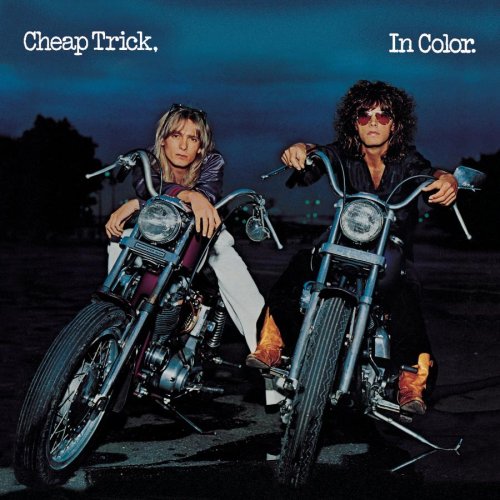
In Color (1977)

1.Hello There
2.Big Eyes
3.Downed
4.I Want You To Want Me
5.You're All Talk
6.Oh Caroline
7.Clock Strikes Ten
8.Southern Girls
9.Come On, Come On
10.So Good To See You
--Bonus Tracks--
11.Oh Boy
12.Southern Girls (Demo Version)
13.Come On, Come On (Demo Version)
14.You're All Talk (Demo Version)
15.Goodnight (Unreleased Live Version
By the time Cheap Trick released In Color in 1977, they had already established themselves as a band with bite—edgy, darkly humorous, and musically fierce. But In Color was no simple continuation of their debut’s aesthetic.
This time, the rough edges were filed down, the guitars polished, and the menace cloaked in gloss. Producer Tom Werman was drafted in to give the band a more commercial sheen,
and the results were—depending on your vantage point—either strategic refinement or sacrilegious dilution.
Certainly, the band's core spirit wasn’t lost. Songs like Hello There and Clock Strikes Ten roar out of the speakers with the urgency and swagger of a band
that knew how to open a show and close a bar. Hello There in particular became a calling card—two minutes of turbo-charged invitation that distilled the band’s kinetic energy into one breathless exhale.
Likewise, Come On, Come On and You’re All Talk retained a feral crunch, albeit dressed up in radio-friendly attire.
Still, one could detect a change. Where the debut album prowled with a sense of unpredictability and danger, In Color walked with a calculated step. Werman’s production gave everything a coat of lacquer—clean, precise, and deliberately aimed at mass appeal. It worked, to an extent. The album found an audience, especially in Japan, where Cheap Trick’s myth would soon go supernova. But within the band, discontent simmered. Bassist Tom Petersson would later remark that the producer and engineer had ruined the record. Whether fair or not, the comment reflects a fundamental tension between artistic grit and commercial aspiration.
Perhaps nowhere is this tension more apparent than in I Want You to Want Me. On paper, it’s a perfect power pop song—clever, catchy, deceptively desperate. But the studio version feels like a misstep, its honky-tonk piano and vaudevillian bounce stripping it of urgency. Ironically, it would take a raw live recording from Budokan to reveal its true potential—feral, yearning, and entirely irresistible. That version became a global hit. This one remains a curiosity.
Yet In Color is far from a failure. In fact, it’s one of the band's most enduring works. Southern Girls, ignored at the time, stands now as one of their greatest achievements—sweet, driving, and somehow both Midwestern and cosmopolitan. Big Eyes and Downed hint at Cheap Trick’s deeper ambitions, weaving melodic sophistication with lyrical bite. It’s easy to see why comparisons to The Beatles began to surface; this was a band that could merge harmony with heaviness, whimsy with whip-smart songcraft.
In later years, the band would attempt to reclaim In Color’s rawer essence, even re-recording the entire album with Steve Albini in the 1990s. That version—never formally released—offers a glimpse of what might have been had the band wrestled full control from the start.
But In Color, as it stands, is a document of a band at a crossroads: raw talent in a tailored suit, ready for the spotlight but itching to rip the costume at the seams. It may not be the purest expression of Cheap Trick, but it is certainly one of their most fascinating.
Go back to the main page
Go To Next Review